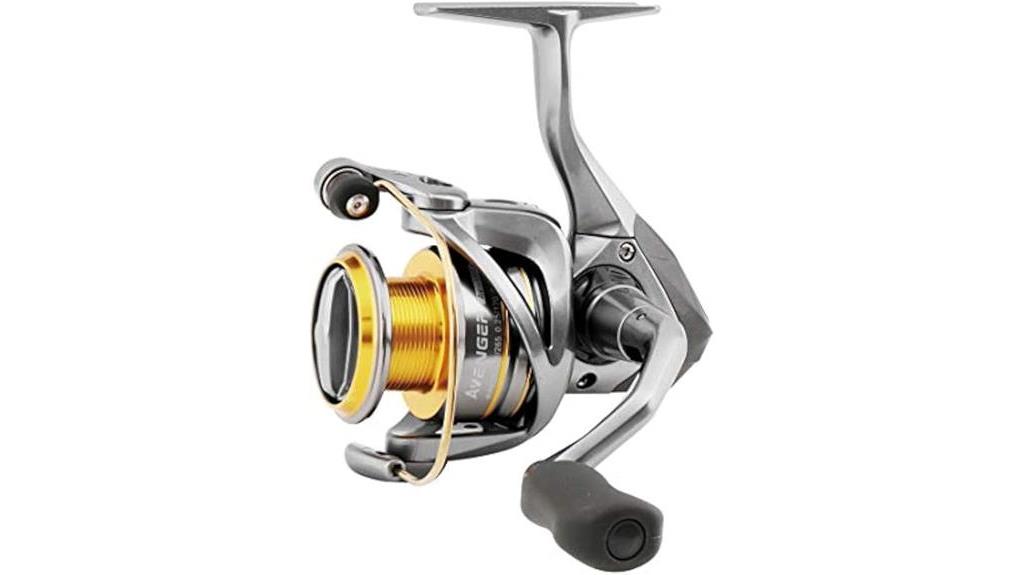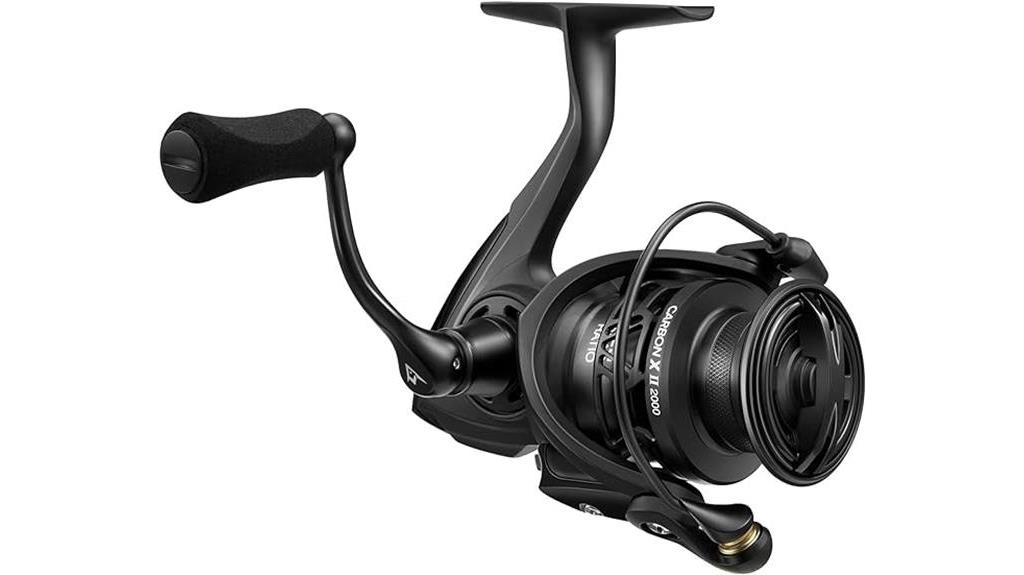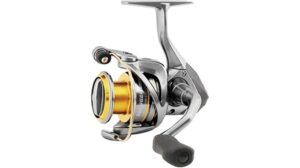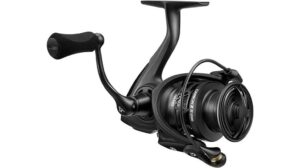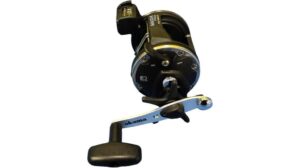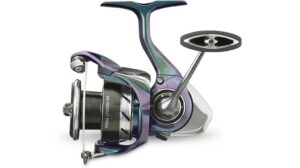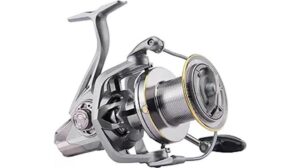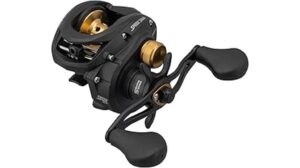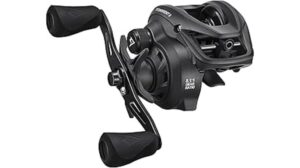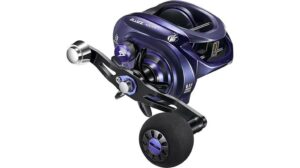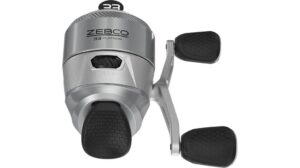To clean and fillet fish, start by scaling it with a descaling tool or butter knife. Next, gut the fish by making a cut along the belly and removing the innards. Rinse the cavity thoroughly. For filleting, make a clean cut behind the gills and along the backbone, separating the meat from the bones. Remove any remaining bones with tweezers. Skin the fillet by carefully separating the flesh from the skin. Trim excess fat and dark meat for better flavor. Finally, portion the fillets as desired. Proper storage in the refrigerator or freezer ensures freshness. Master these steps, and you'll be well on your way to becoming a fish-cleaning expert.
Key Takeaways
- Prepare your workspace with a sturdy table, sharp fillet knife, and cutting board for efficient fish cleaning.
- Scale the fish using a descaling tool or butter knife, scraping in a downward motion for thorough removal.
- Gut the fish by making a clean cut along the belly, removing organs, and thoroughly rinsing the cavity.
- Fillet the fish by separating meat from bones, using steady knife pressure and careful angle technique.
Essential Tools and Equipment

To successfully clean and fillet fish, you'll need a few key tools and pieces of equipment at your disposal. The most crucial item is a sharp fillet knife. It's the cornerstone of your fish-cleaning kit, ensuring you can effectively clean and fillet your catch. You'll want to consider different blade sizes for various fish types, with an 8-inch blade being ideal for larger species.
A cutting board is another essential tool. Opt for a cleaning board made of untreated wood to avoid chemical contamination. Positioning it at the right height will make your task easier and more efficient, allowing you to work comfortably and precisely.
For those looking to streamline the process, an electric fillet knife can be a game-changer. It offers faster and more precise filleting, especially when dealing with multiple fish or larger catches.
Preparing Your Workspace
Before you start cleaning and filleting your fish, it's crucial to set up a proper workspace that's clean, organized, and tailored to your needs. Begin by choosing a sturdy cleaning table at a comfortable height to prevent back strain and ensure efficiency. This will be your home base for all your fish preparation activities.
Next, select a dedicated cleaning board. You can purchase one or use a flat piece of untreated lumber. This board provides a stable surface for filleting and helps keep your workspace tidy. Remember, avoid treated wood to prevent chemical contamination of your fish.
Your fillet knife is a key player in this process. Ensure it's sharp and appropriate for the size of the fish you're cleaning. Different blade sizes work best for various fish types, so have a selection on hand if possible.
Scaling the Fish

To scale your fish, you'll need a descaling tool or a butter knife.
Begin by holding the fish firmly and scraping the scales off in a downward motion from tail to head.
This technique prevents scales from flying around and ensures a clean, smooth surface for filleting and cooking.
Tools for Scaling
When scaling fish, you'll need the right tools to efficiently remove those stubborn scales without damaging the delicate skin beneath. The most common and effective tools for this task are a sharp knife, a dedicated descaling tool, or a simple butter knife. Each of these options can be effective when used correctly, allowing you to achieve a clean surface for filleting and cooking.
A sharp knife is versatile and can be used with a scraping motion to remove scales. However, be careful not to apply too much pressure, as this may cut into the skin.
A descaling tool, designed specifically for this purpose, often features serrated edges or multiple blades that make quick work of removing scales. It's an excellent choice for frequent fish cleaners.
If you're in a pinch, a butter knife can serve as a makeshift scaling tool. Its dull edge is less likely to damage the skin while still effectively removing scales.
Whichever tool you choose, remember to work in a downward motion, starting from the tail and moving towards the head. This technique ensures thorough scale removal and prepares your fish for the next steps in the cleaning process.
Proper Scaling Technique
Mastering the proper scaling technique is crucial for efficiently preparing your fish for filleting and cooking. As part of our fish-loving community, you'll want to ensure your catch is perfectly prepped for the best culinary experience.
To begin scaling, you'll need a descaling tool or a butter knife. Start at the tail and work your way towards the head, scraping against the grain of the scales. This method helps remove the outer layer more effectively, making your fish easier to clean and fillet later on.
As you descale, be thorough but gentle. You don't want to damage the skin or meat underneath. Make sure to cover all areas, including around the fins and near the head. It's easy to miss spots, so double-check your work.
Gutting and Cleaning
Now that you've scaled the fish, it's time to gut and clean it. Start by preparing your workspace and tools, ensuring you have a sharp knife and a clean surface.
Next, carefully remove the scales and guts, being mindful of the fish's anatomy to avoid injury or contamination.
Prepare Workspace and Tools
Preparation is key to efficiently gutting and cleaning fish, so gather your essential tools and set up a sanitary workspace before you begin. You'll need a sharp fillet knife, a scaling tool, and a cooler filled with ice to keep your catch chilled. Arrange these items on a clean, flat surface where you can work comfortably.
Ensure your workspace is well-lit and has easy access to running water for rinsing. It's crucial to maintain cleanliness throughout the process, so have a designated area for disposing of scales, entrails, and other waste. This will help you keep your work area tidy and hygienic.
Before you start gutting and cleaning, make sure your fish is properly chilled. This preserves freshness and makes the process easier. Begin by using your scaling tool or a butter knife to remove scales from the fish's skin. Work from tail to head, being thorough to ensure a clean result.
Remove Scales and Guts
With your workspace prepared and tools at hand, you'll start the gutting process by removing the fish's scales and internal organs. Begin by using a descaling tool or butter knife to scrape off the scales, working from tail to head. Be thorough, as missed scales can affect the texture of your final dish.
Next, it's time for gutting. Make a clean cut along the belly, from the vent to the gills. Carefully remove all internal organs, ensuring you don't rupture any. Rinse the cavity thoroughly with cold water to remove any remaining blood or debris.
| Emotion | Action | Result |
|---|---|---|
| Confidence | Proper technique | Clean, fresh fish |
| Satisfaction | Efficient cleaning | Ready for cooking |
| Pride | Mastering the process | Improved culinary skills |
Rinse and Inspect Cavity
After removing the internal organs, you'll need to thoroughly rinse and inspect the fish's cavity to ensure a clean, fresh result. This step is crucial for maintaining the quality and flavor of your catch, so let's do it right together.
Start by holding the fish under cool running water, allowing it to flow through the cavity. Use your fingers to gently scrub the inside, removing any remaining debris or blood clots. Pay special attention to the backbone area where bits of organ tissue may cling. As you rinse the cavity, be thorough but gentle to avoid damaging the delicate flesh.
Once you've rinsed, it's time to inspect the cavity closely. Look for any leftover organs or scales that might've been missed. These can affect the taste of your fish, so it's important to remove them completely.
Run your fingers along the inside of the cavity, feeling for any unusual bumps or textures. If you find anything, carefully remove it and rinse again.
Making the First Cut

The initial cut sets the stage for successful filleting, so you'll want to approach it with confidence and precision. Before you begin, ensure you've completed the crucial preparatory steps. You've already bled out the fish by making a shallow incision under the gills, descaled it using the back of your knife, and removed the guts by cutting open the stomach. Now, it's time to make that first cut.
Start by chopping off the head at the gills. This clean separation will give you a clear starting point for your fillet cuts. Next, remove the fins to create a smooth surface for your knife to glide along. With these preliminaries out of the way, you're ready to make your first fillet cut.
Using a sharp fillet knife, begin at the head end and cut along the fish's backbone to guide your blade. Apply steady pressure as you slice through, keeping the knife angled slightly downward. This technique will help you separate the fillet from the bones efficiently.
Removing the Fillet
Once you've made the initial cut, you'll need to carefully separate the meat from the skin. Start at the tail end and use your knife to slice between the fillet and the skin, keeping the blade angled slightly downward.
As you work your way up the fillet, be sure to trim any excess fat or dark meat you encounter to ensure the best quality and flavor.
Separating Meat From Skin
Now you'll tackle the crucial step of separating the meat from the skin to create perfect fillets. This process requires precision and care to maximize your meat yield. Begin by placing your knife between the flesh and skin, keeping it as close to the skin as possible. With steady, controlled motions, slice along the length of the fillet, allowing the blade to glide smoothly.
Once you've removed the skin, it's time to address the rib cage. Carefully cut along the ribs, ensuring you retain as much meat as possible. Remember, precise cuts are key to avoiding waste and achieving clean separation.
To help you visualize the process, imagine these steps:
- Positioning your knife at a slight angle against the skin
- Applying gentle pressure as you slide the blade forward
- Watching the fillet peel away from the skin
- Feeling the texture change as you approach the rib cage
After completing one side, flip the fish and repeat the process. With practice, you'll develop a rhythm and confidence in your technique. Remember, we're all learning together, and each fillet you create brings you closer to mastery.
Trimming Excess Fat
After you've successfully separated the meat from the skin, it's crucial to trim any excess fat from your fillet to ensure optimal flavor and texture. Trimming excess fat is an essential step in preparing your fish for cooking, as it helps create a leaner cut and enhances the overall taste of your dish.
To remove excess fat, carefully examine your fillet and identify any visible fatty areas. Using a sharp knife, gently cut away these sections, being careful not to remove too much meat. This process not only improves the flavor but also promotes healthier eating by reducing the fat content.
Here's a quick guide to help you trim excess fat effectively:
| Step | Action | Benefit |
|---|---|---|
| 1 | Identify fat | Ensures targeted trimming |
| 2 | Use sharp knife | Allows precise cuts |
| 3 | Remove carefully | Preserves meat quality |
Deboning Techniques

Deboning techniques are crucial skills for preparing fish fillets that are free from pesky bones and enjoyable to eat. When filleting fish, it's essential to master the art of removing bones to ensure a pleasant dining experience. Start by using a sharp knife to carefully cut along the backbone, separating the fillet from the skeletal structure. As you work, you'll encounter pin bones that require extra attention.
To effectively remove these stubborn bones, follow these steps:
- Run your fingers along the fillet to locate the bones
- Use tweezers to grasp each bone firmly
- Pull the bone out at a slight angle, following its natural direction
- Check for any remaining bones by gently pressing the fillet
Skinning the Fillet
With the bones removed, you'll want to focus on skinning the fillet to enhance its flavor and versatility in cooking. This step is crucial for achieving a cleaner presentation and allowing marinades and seasonings to better penetrate the fish.
To skin your fillet, start by placing it skin-side down on a cutting board. This positioning will give you more control and make the process easier. Beginning at the tail end, slide your knife between the skin and the flesh. Use a gentle sawing motion to separate the skin from the fillet, being careful not to waste any meat.
As you work your way along the fillet, you'll find that the skin comes off more easily with practice. Remember, removing the skin can help reduce the fishy taste that some people find off-putting.
It's a skill that'll make you feel like a true culinary expert in no time.
Trimming and Portioning

Trimming and portioning your fish fillets are essential steps that enhance both the presentation and cooking quality of your seafood. After you've cleaned and filleted your fish, it's time to refine your cuts. With a sharp knife, remove any excess fat or dark meat from the fillet for a leaner, more appealing finish. This trimming process not only improves texture but also ensures a more consistent cooking experience.
Next, consider portioning your fillets into steaks. This step can significantly improve presentation and allow for more uniform cooking. Here's what you'll achieve with proper trimming and portioning:
- Cleaner, more professional-looking cuts
- Improved texture and flavor
- Easier portion control for meals
- Better freezer storage and organization
Don't discard the trimmings! You can use smaller pieces for quick meals or to make a flavorful fish stock. Remember, if you've chosen to keep the skin on, you can easily remove it now with your sharp knife for an even leaner result.
Storage and Preservation Methods
After you've cleaned, filleted, and portioned your fish, proper storage and preservation methods are crucial for maintaining its quality and extending its shelf life. For optimal freshness, store fresh fish in the refrigerator and consume it within two days. If you're not planning to eat it soon, freezing is your best option for long-term preservation.
To freeze fish fillets, use airtight containers or freezer bags. Proper labeling and dating are essential for tracking freshness. Here's a quick guide to fish storage:
| Storage Method | Temperature | Duration | Notes |
|---|---|---|---|
| Refrigerator | 32-40°F | 1-2 days | Best for immediate use |
| Freezer | 0°F or below | 2-3 months | Use airtight packaging |
| Ice | 32°F | 1-2 days | For temporary storage |
| Vacuum-sealed | 0°F or below | 4-6 months | Extends freezer life |
When you're ready to use frozen fillets, thaw them in the refrigerator overnight. This method helps maintain texture and taste. Remember, never refreeze thawed fillets, as this can significantly reduce quality. By following these storage and preservation tips, you'll ensure your fish stays fresh and delicious for longer.
Frequently Asked Questions
How to Fillet a Fish Step by Step?
To fillet a fish, start by removing scales. Make precise cuts with a sharp knife, following the spine. Carefully separate the flesh from bones. Remove the skin and trim excess fat. Dispose of waste properly. You'll have perfect fillets in no time!
How to Clean Fish Step by Step?
Like peeling back layers of an onion, you'll start by removing fish scales with a scaler. Next, tackle the gutting process using sharp kitchen tools. Understanding fish anatomy helps you clean efficiently, preparing it for various cooking methods.
What Are the 4 Stages of Filleting a Fish?
You'll master filleting in four stages: First, prepare with gutting. Then, apply precise knife techniques to separate fillets. Next, focus on bone extraction and skin removal. Finally, add finishing touches for perfect, ready-to-cook fillets. You've got this!
What Is the First Thing to Remove When Filleting a Fish?
You're ready to fillet your catch, but where to start? While scale removal and gutting are important, the first crucial step is head removal. It's the gateway to your filleting journey, setting the stage for fin and tail trimming.
Conclusion
You've now mastered the art of filleting fish like a pro. With these skills in your culinary arsenal, you'll be swimming in delicious, perfectly prepared fish dishes.
Remember to keep your tools sharp and your workspace clean. Whether you're scaling, gutting, or deboning, practice makes perfect. Don't be afraid to dive in and refine your technique.
Soon, you'll be filleting fish with the precision of a surgeon and the flair of a chef.

